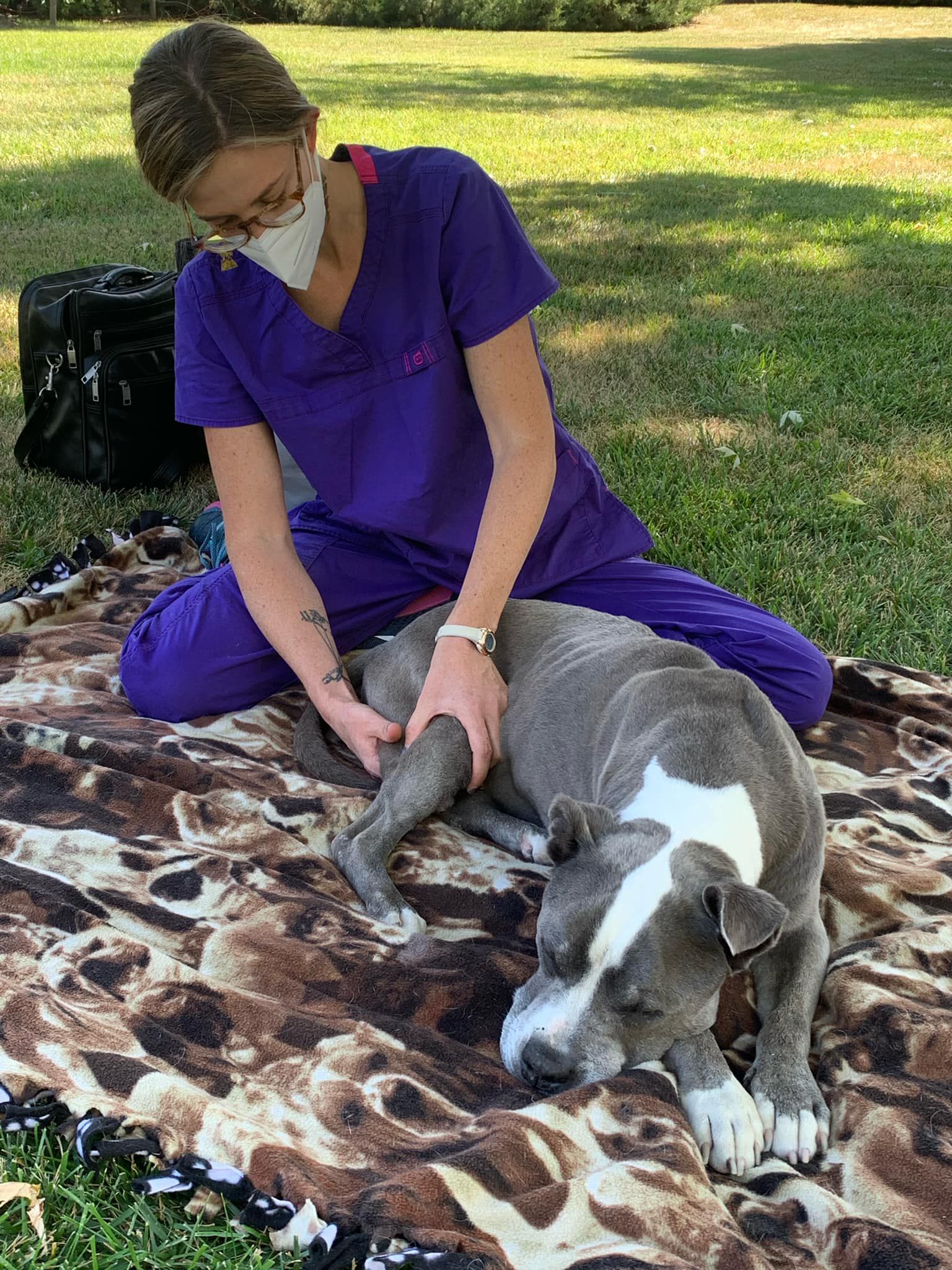
If you’ve been lucky enough to love a dog, you know that many develop some level of arthritis. Arthritis, or joint inflammation, most commonly appears in senior dogs; however, young dogs are also susceptible. Managing dog arthritis involves pharmaceutical and nutraceutical intervention, as well as lifestyle and environmental adaptations. Include massage therapy in this list as it creates a rewarding experience for both you and your dog. While most dogs respond positively to massage therapy, dogs with arthritis find it particularly life-changing.
Benefits of dog massage for arthritis include:
- Increased flexibility and range of motion
- Reduced pain or discomfort
- Minimized muscle wasting
- Increased circulation, providing nutrients to muscles
Dogs with arthritis typically can’t exercise and move as much as they’d like to. Exercise often aggravates their symptoms. An aerobic activity, massage therapy increases blood circulation throughout the body, similar to running or active play. It also stimulates lymphatic circulation required for healthy immune function. This is highly supportive for a more sedentary, arthritic pup!
Tips for dog massage for arthritis
When performing massage on your arthritic dog, follow this advice:
- Less is more. Do not provide deep tissue massage on any animal. Less pressure is always more effective. Never use more than 2 pounds of pressure, avoid direct pressure on the spine and joints, and always stop if your dog appears uncomfortable.
- Focus on problem areas. You’ll find common problem areas for dogs with arthritis in the hips, lower back and around joints. Don’t forget compensatory areas, such as the neck, shoulders or glutes. Bring in a professional to help you identify your pup’s specific problem spots.
- Keep sessions short. Keep mini massages at home to 15-minute sessions a few times a week. Focus on specific body regions and do not perform a head-to-tail session for these. However, when massaging a specific area, work both sides of the body. For example, if you massage your dog’s left hip, remember to massage his right hip, too!
- Practice massage strokes. Start with effleurage — a flat handed petting. Use this stroke to warm up muscles and tissues, and to identify areas of heat, coolness or tension. From there, move on to petrissage, a versatile stroke used for releasing tension. Petrissage involves kneading and circular strokes that can be performed with the fleshy or flat portion of your palm, your fingers or your thumbs.
Watch this short video tutorial on dog massage for arthritis. For a more therapeutic session, hire a professional.
There are multiple ways to incorporate massage therapy into your arthritic dog’s life, including learning basic at-home massage techniques or hiring a professional canine massage therapist for a more therapeutic session. I encourage you to explore this healing modality for your arthritic dog — the positive results will surprise you!
To learn more about the benefits of dog massage, read my Dogster article All About Dog Massage
<
Credit Source link







